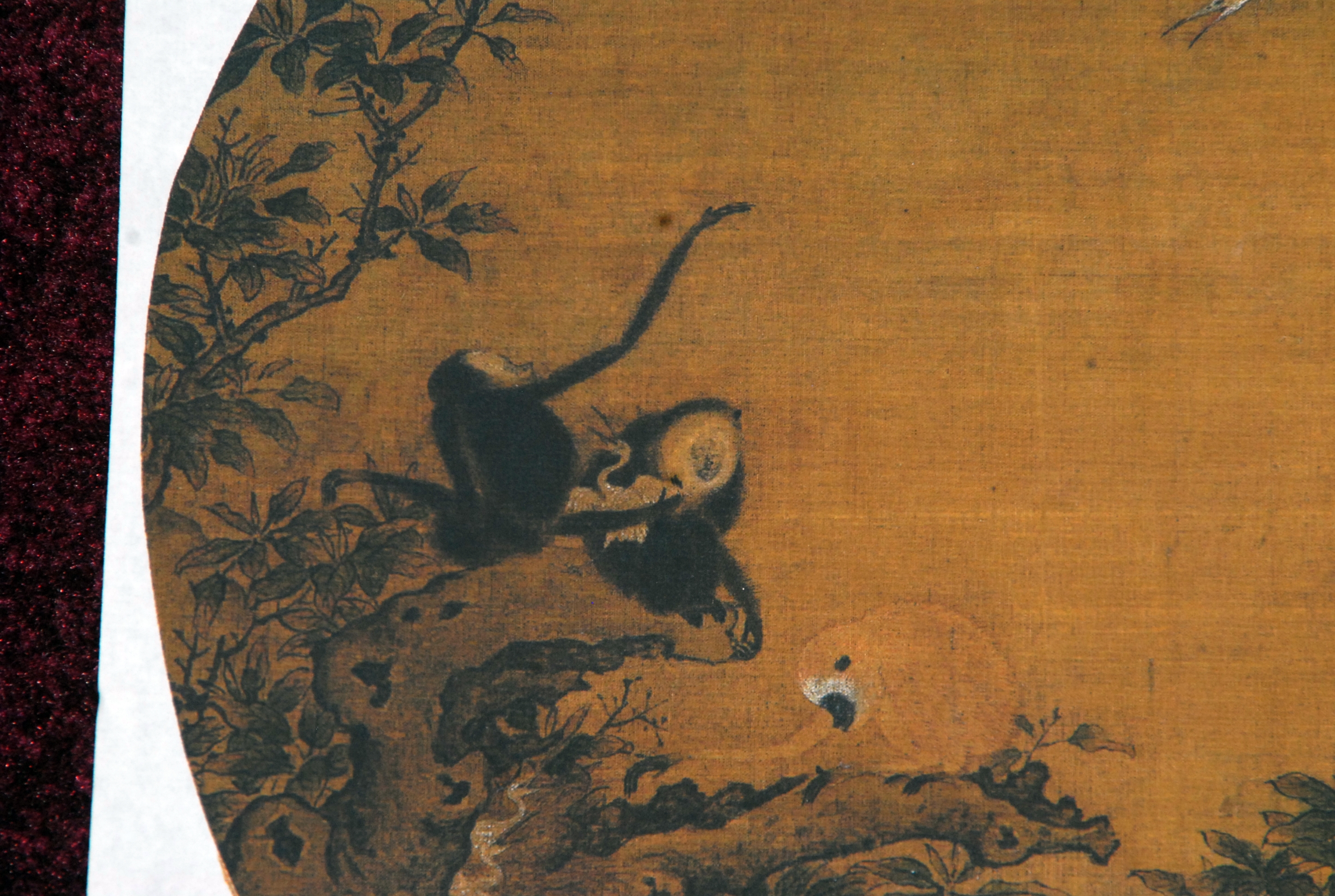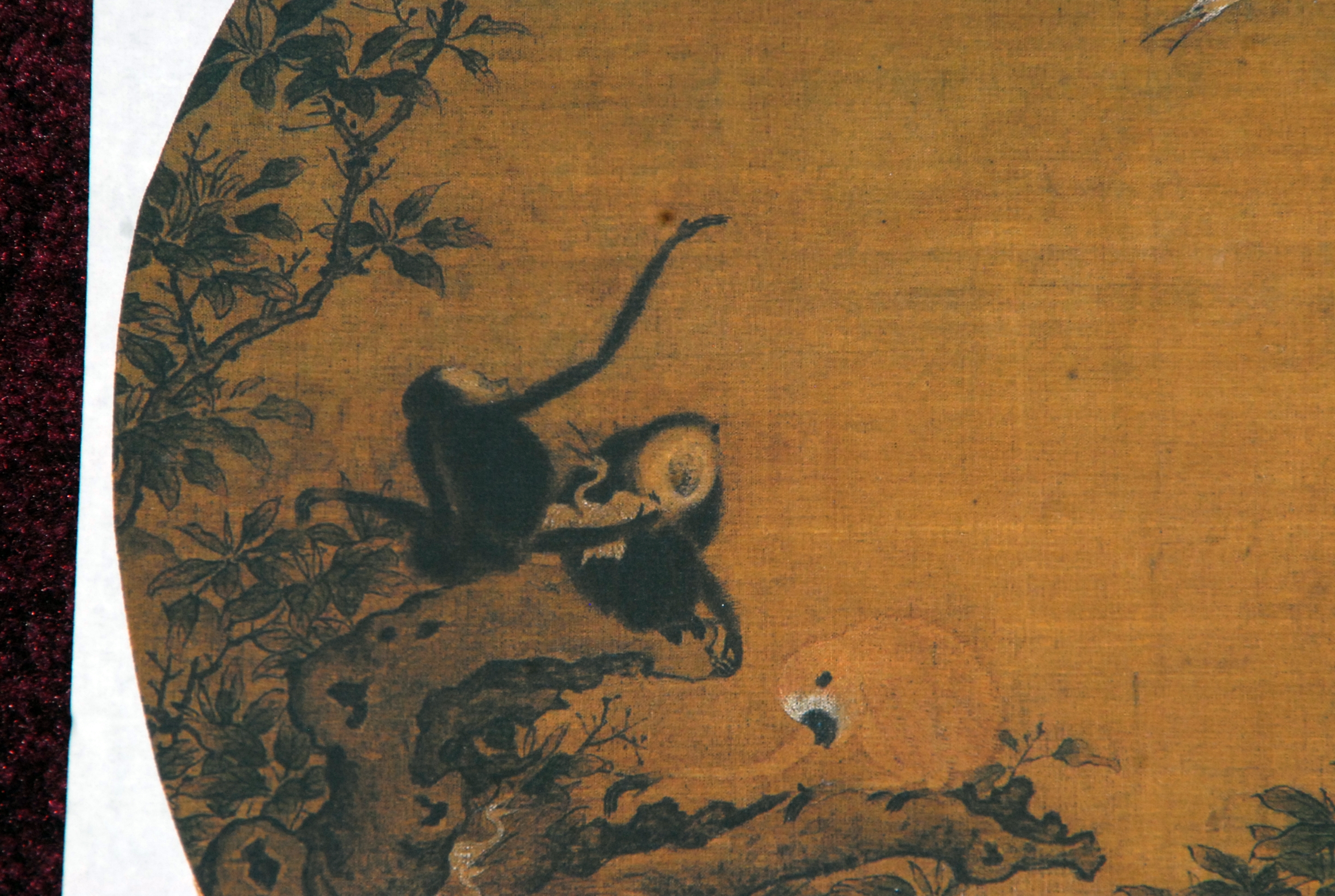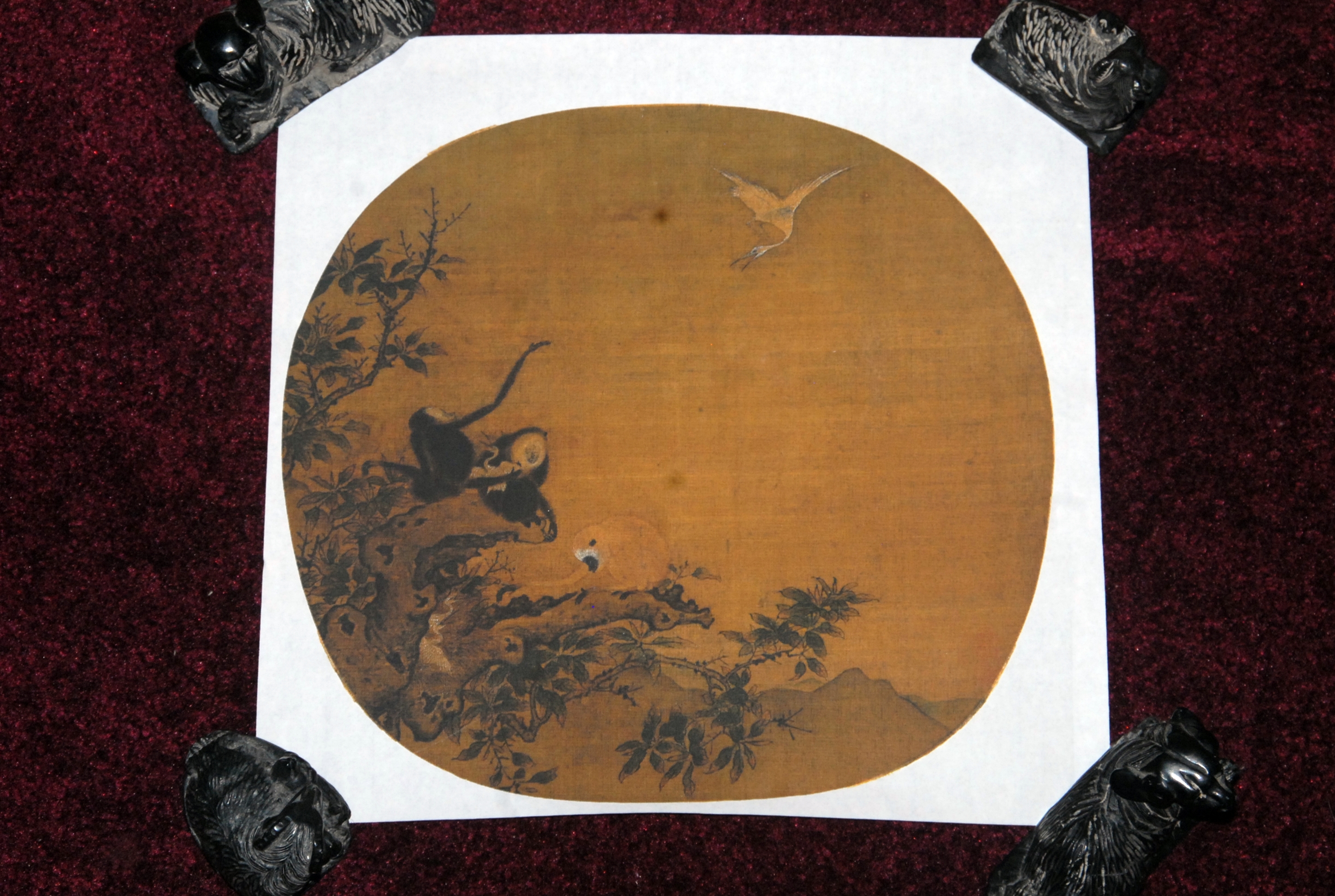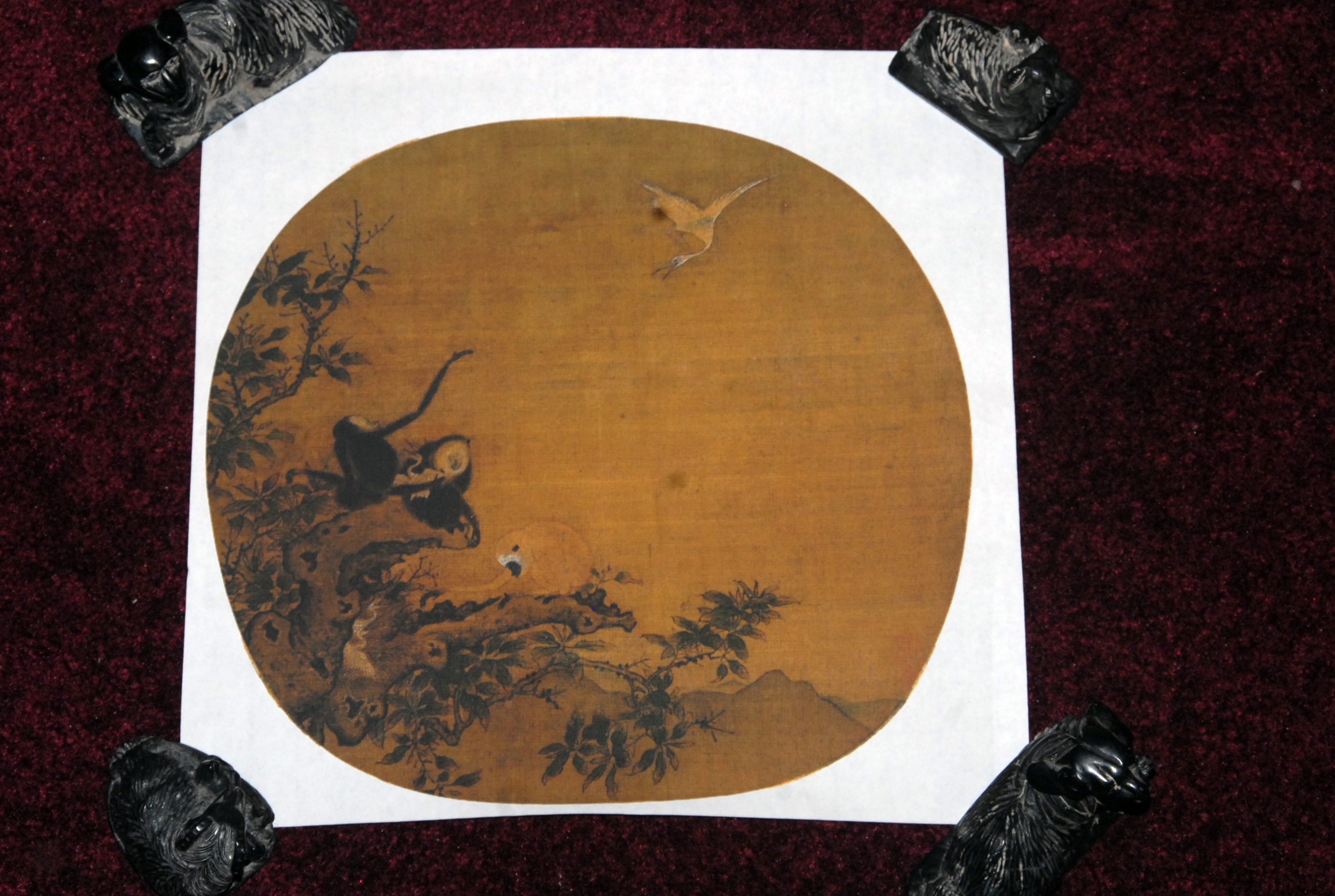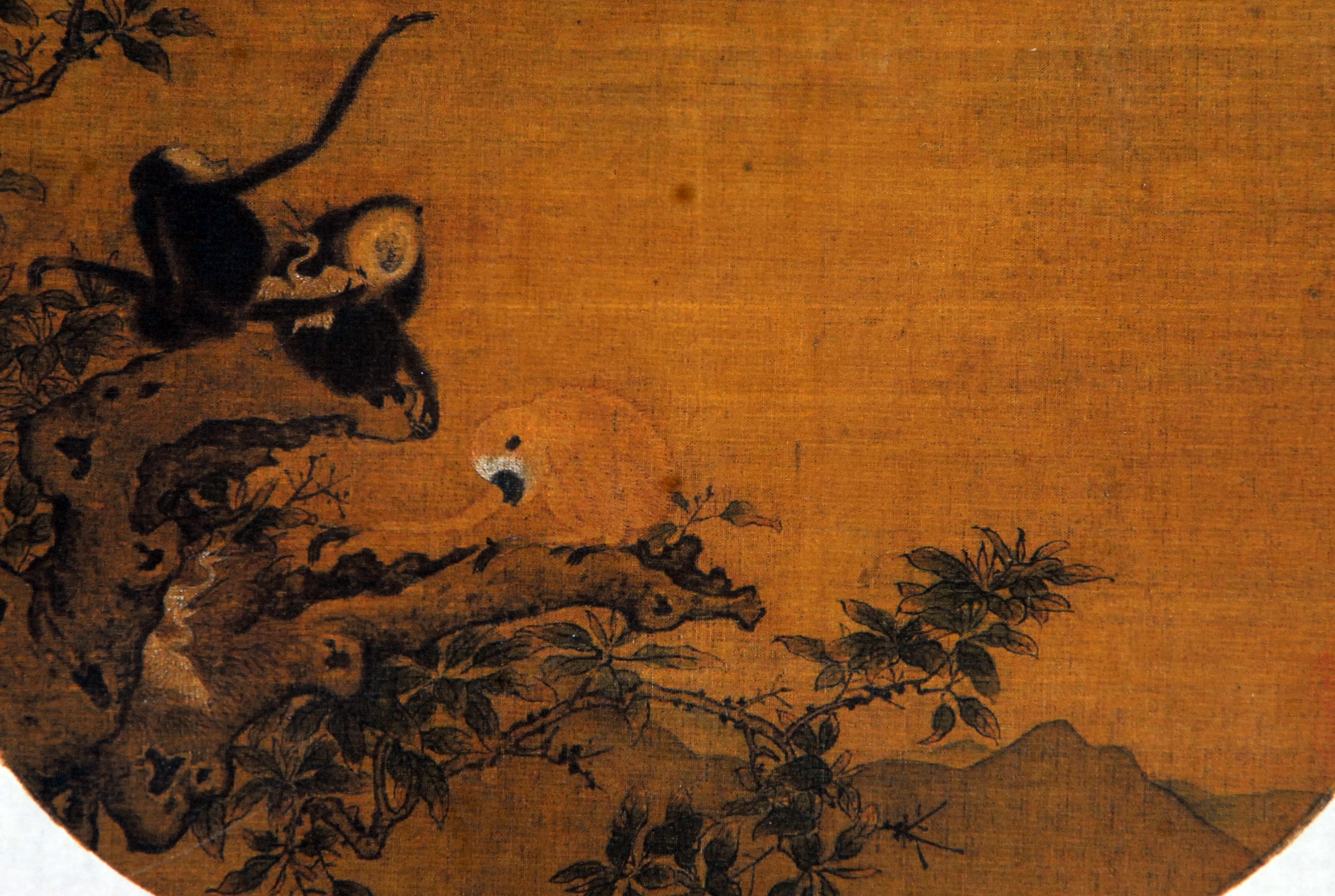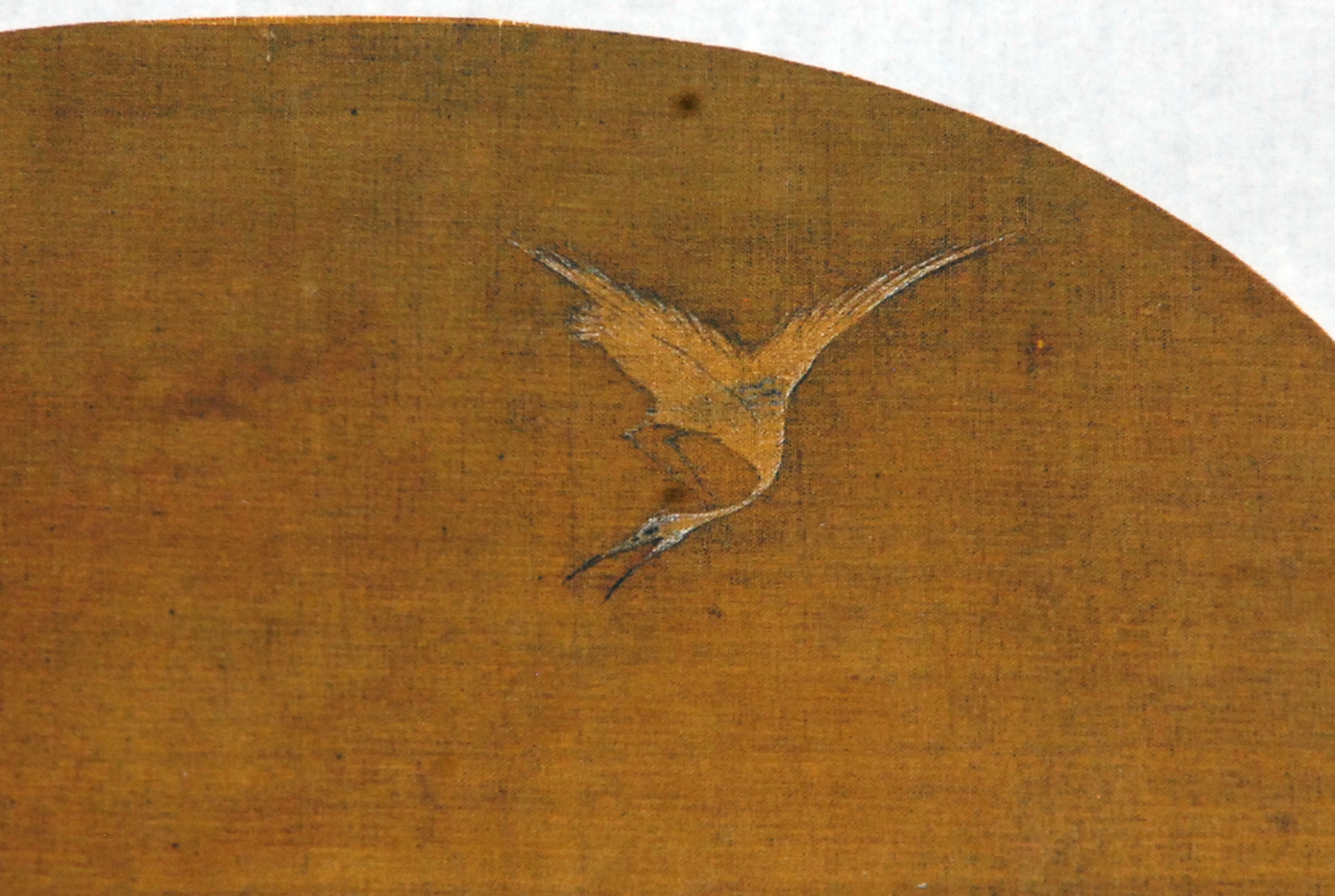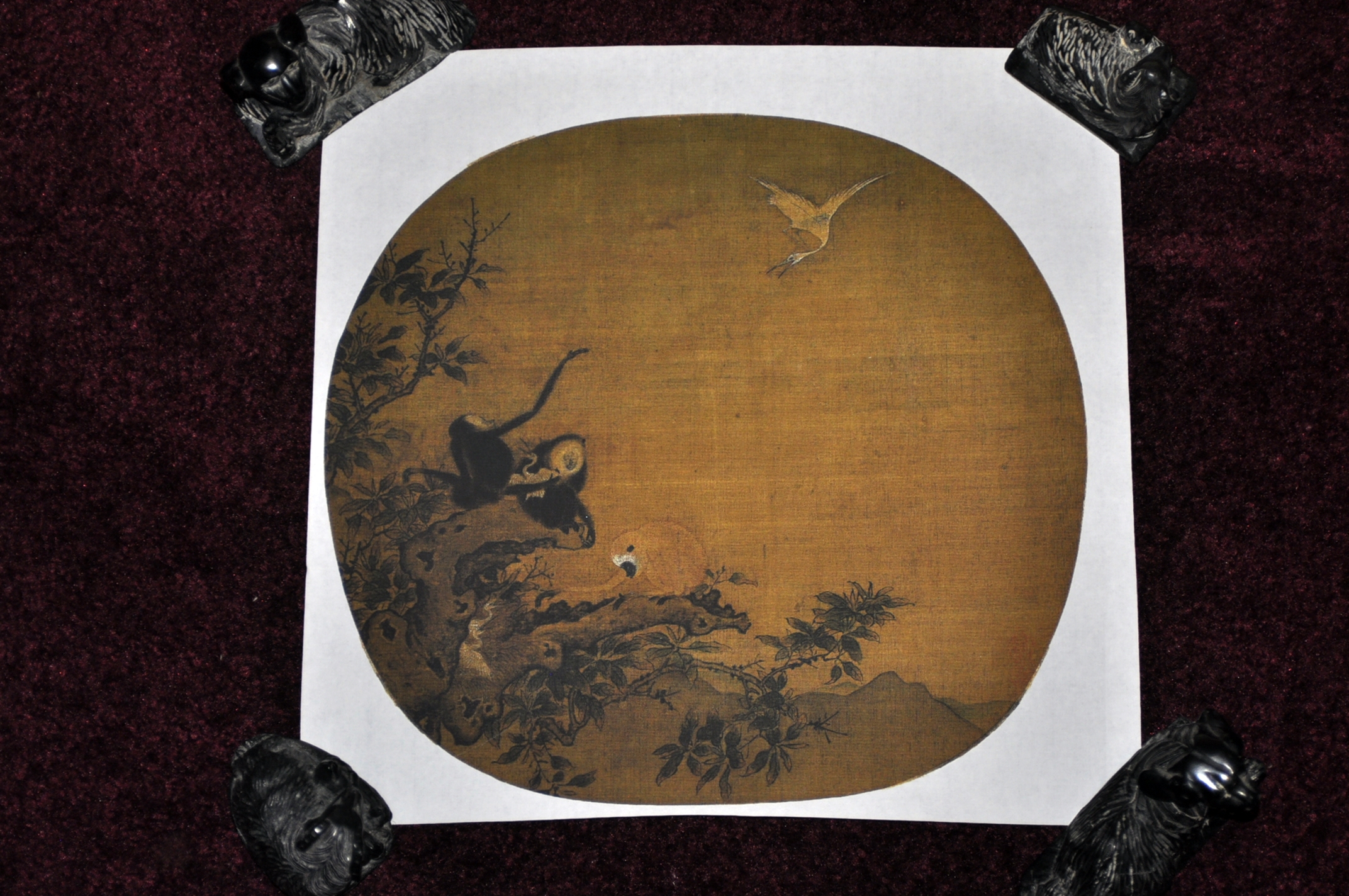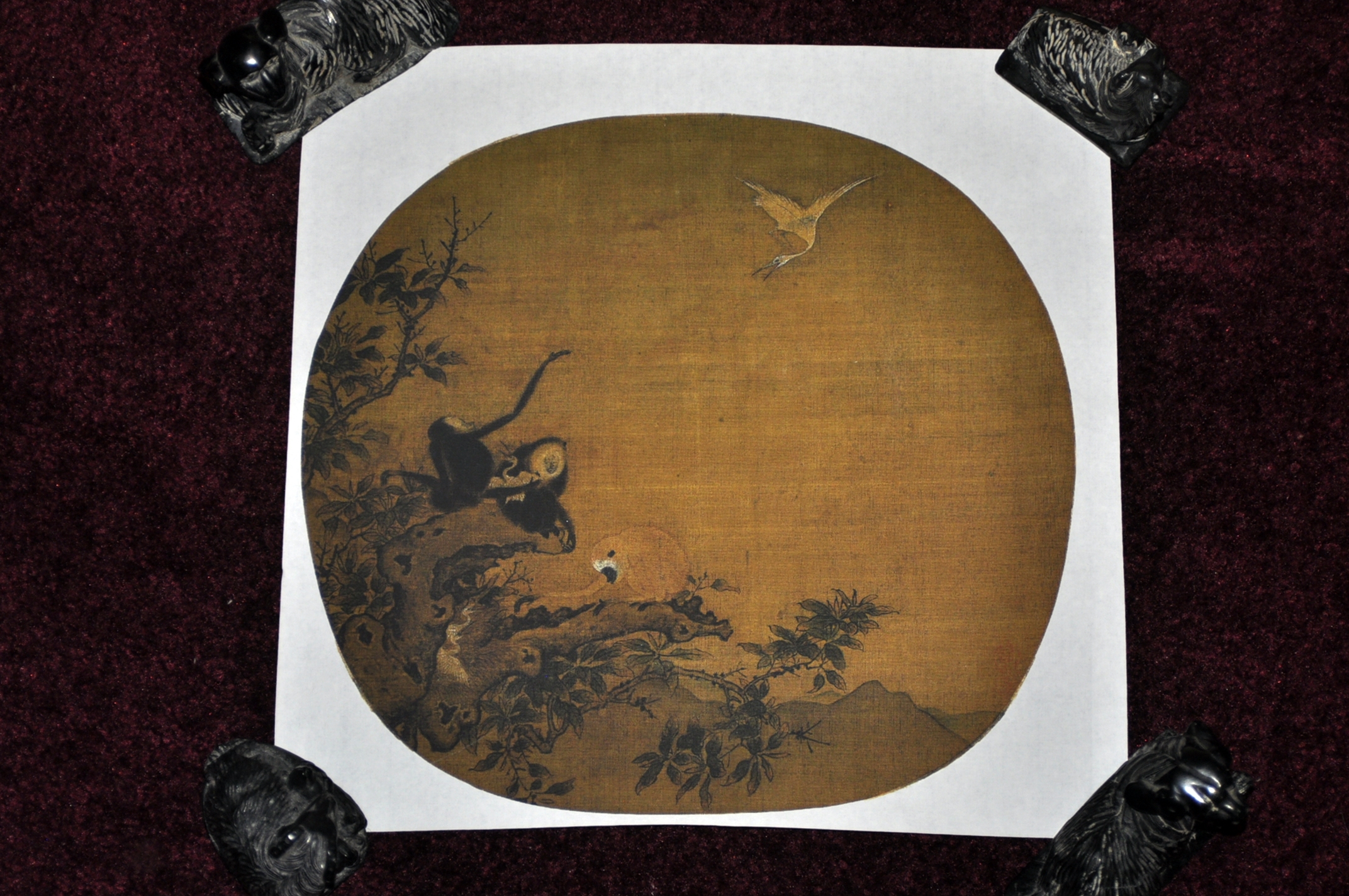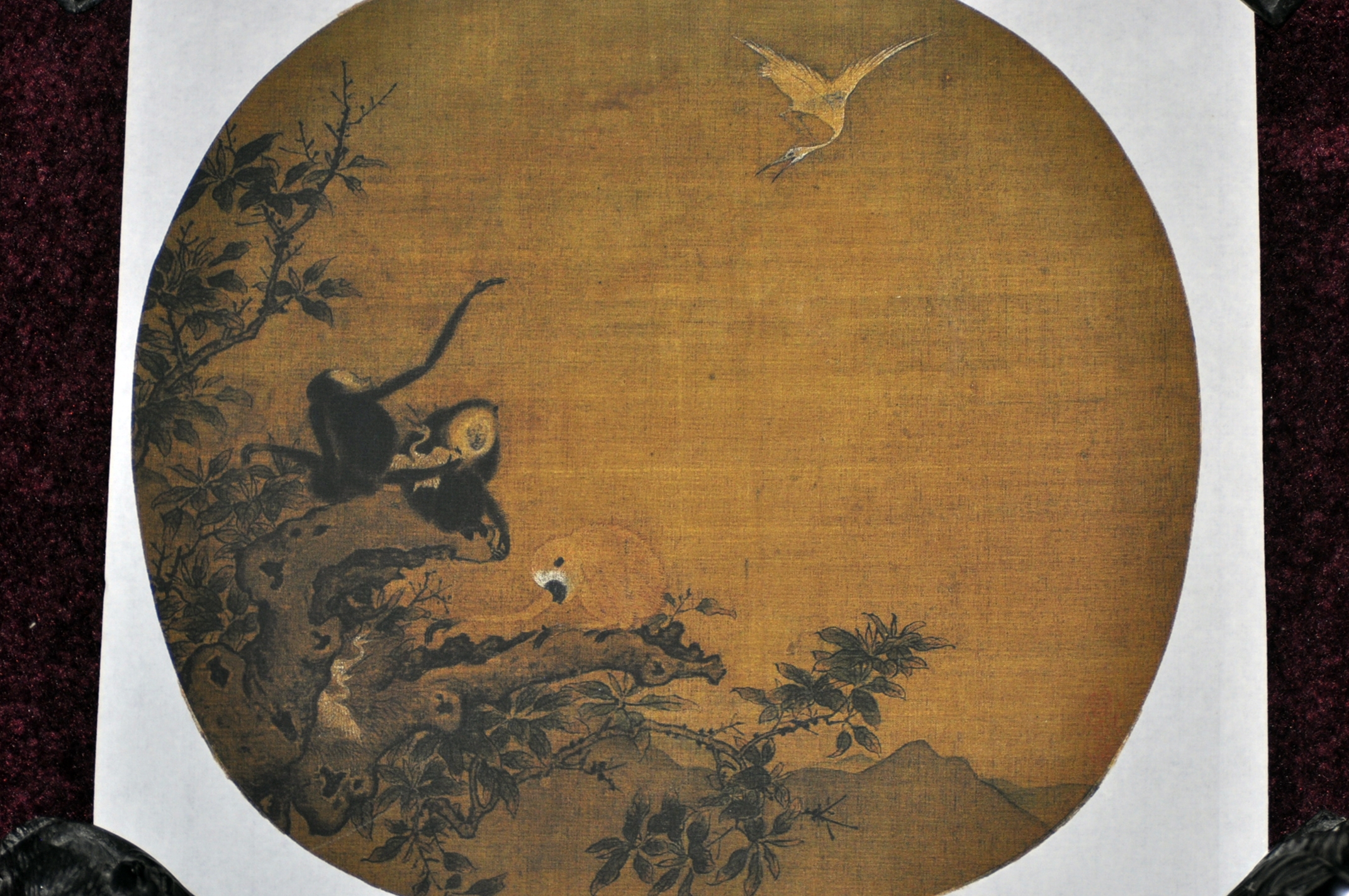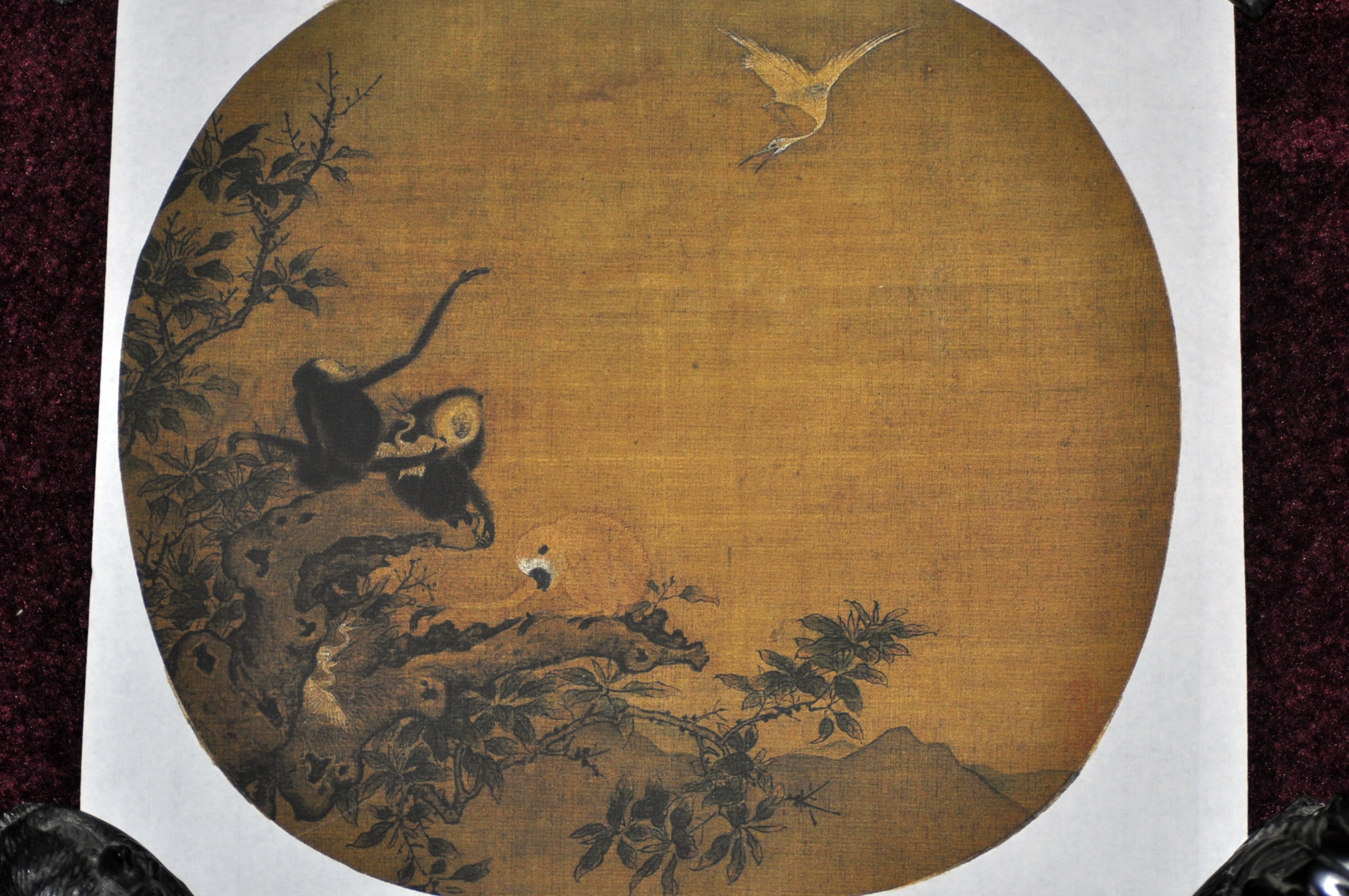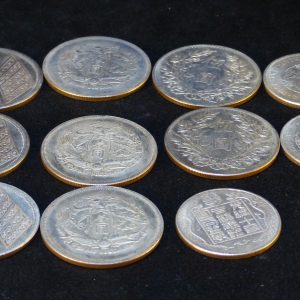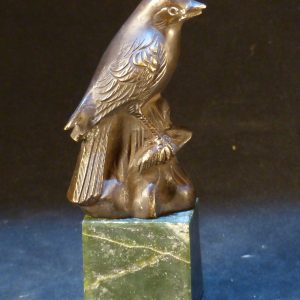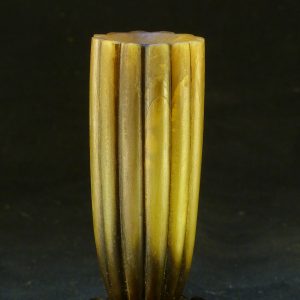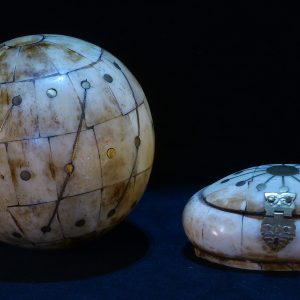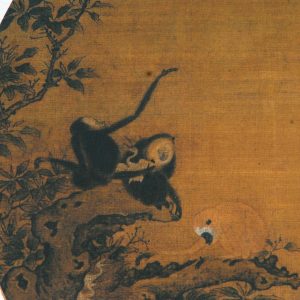Description
参考:纽约大都会博物馆 南宋 绢畫 “三元得祿”圖扇面
《三元得禄图》,北宋,易元吉(传),绢本设色,纨扇页,纵24.1厘米,横22.9厘米,纽约大都会艺术博物馆藏。
《三元得禄图》旧传北宋画家易元吉作。画面描绘了三只猴子袭击白鹭的窝巢,正是取“三猿得鹭”谐音“三元得禄”之意,寓意在科举考试中能“连中三元”。
“猴”音同“侯”,意味着升官封侯,飞黄腾达;“猿”又音同“元”,象征状元——功成与名就,涵盖了当时人们的两大终极愿望,因此,古代不少谐音的吉祥话里都少不了它。
最常见的像是猴子与鹿,在古代,“猴”通“侯”,侯是中国古代爵位之一,鹿又与“禄”谐音,都寓意着官职爵位。
另外一些作品中,还常将猿猴和蜂或枫树绘于一图,谐音“封侯”,同样也带有加官进爵、禄位高升的吉祥含义。
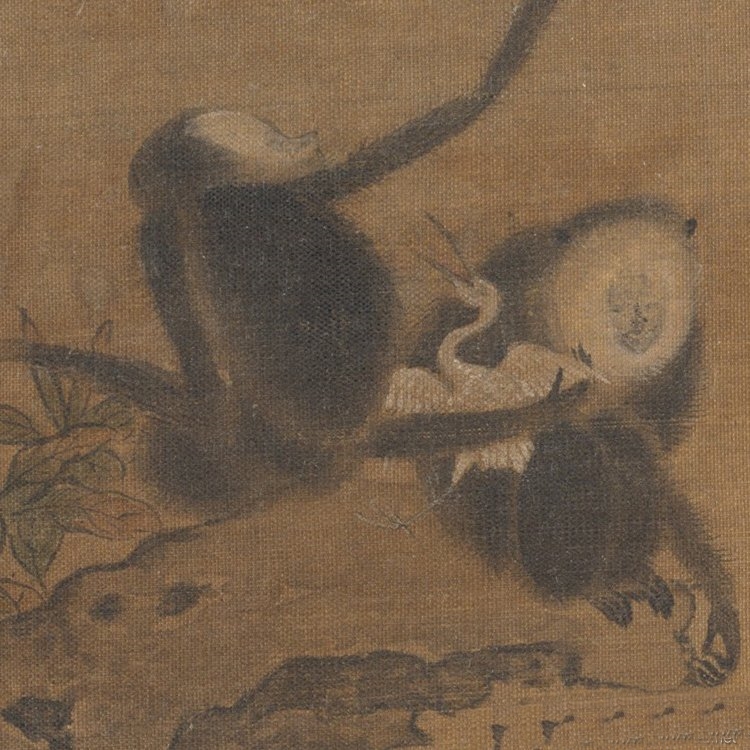
参考: 纽约大都会博物馆 南宋 佚名 “三元得祿”圖扇頁 Gibbons Raiding an Egret’s Nest

late 12th century
Unidentified Artist
Taken literally, this painting is a dramatic vignette from nature, in which three gibbons raid an egret’s nest, capturing young birds as their mother circles above in anguish. Symbolically, the animals comprise a rebus, a visual pun in which a phrase is spelled out using pictures. In Chinese, the phrase “three gibbons capture egrets” (san yuan de lu) may also be read as “a triple first gains power,” a wish for success in the three levels of the imperial examinations. Originally mounted as a fan, this exquisite painting would have been the perfect gift for an aspiring scholar preparing for the exams.
Object Details
Artist:Unidentified Artist Chinese
Artist:Formerly Attributed to Yi Yuanji (Chinese, died 1066)
Period:Southern Song dynasty (1127–1279)
Date:late 12th century
Culture:China
Medium:Fan mounted as an album leaf; ink and color on silk
Dimensions:Image: 9 1/2 × 9 in. (24.1 × 22.9 cm)
Classification:Paintings
Credit Line:John Stewart Kennedy Fund, 1913
Accession Number:13.100.104
Signatures, Inscriptions, and Markings
Inscription: No artist’s inscription, signature, or seal
Label strip
Unidentified, 1 column in standard script, undated:
Yi Yuanji of the Northen Song dynasty.
北宋易元吉
Provenance
John C. Ferguson , until 1913; sold to MMA]
Exhibition History
New York. China Institute in America. “Album Leaves from the Song and Yuan Dynasties,” March 26, 1970–May 30, 1970.
New York. The Metropolitan Museum of Art. “Text and Image: The Interaction of Painting, Poetry, and Calligraphy,” January 23, 1999–August 16, 1999.
New York. The Metropolitan Museum of Art. “Monkey Business: Celebrating the Year of the Monkey,” January 8, 2016–July 24, 2016.
Timeline of Art History
Timelines
Central and North Asia, 1000-1400 A.D.
China, 1000-1400 A.D.
MetPublications
“Image as Word: A Study of Rebus Play in Song Painting (960–1279)”: Metropolitan Museum Journal, v. 34 (1999)
Beyond Representation: Chinese Painting and Calligraphy, Eighth–Fourteenth Century
参考:纽约大都会博物馆 南宋 佚名 猿鹿圖 冊頁 Gibbons and Deer
Unidentified Artist

This painting is a rebus or pictorial pun, that conveys a wish for success on an examination. The Chinese title of the painting, Yuan lu (“gibbons and deer”), is a homophone for the expression “First [place gains] power.” Thus, the painting must be read as a text, its images read as words.
Object Details
Artist:Unidentified Artist Chinese, 13th century
Period:Southern Song dynasty (1127–1279)
Culture:China
Medium:Album leaf; ink and color on silk
Dimensions:7 x 8 3/4 in. (17.8 x 22.2 cm)
Classification:Paintings
Credit Line:Edward Elliott Family Collection, Purchase, The Dillon Fund Gift, 1982
Accession Number:1982.1.4
Signatures, Inscriptions, and Markings
Signature: Unsigned
Marking: The owners of the seal impressed in the upper right corner and the half seals placed across the left and right edges of the composition are as yet unidentified. Traces of red pigment in the lower left corner suggest that a fourth seal, now effaced, may have once been impressed there.
Provenance
[ David L. Elliott , West Palm Beach, FL, until 1981; sold to MMA]
Exhibition History
New York. The Metropolitan Museum of Art. “Text and Image: The Interaction of Painting, Poetry, and Calligraphy,” January 23, 1999–August 16, 1999.
Timeline of Art History
Timelines
Central and North Asia, 1000-1400 A.D.
China, 1000-1400 A.D.
MetPublications
“Image as Word: A Study of Rebus Play in Song Painting (960–1279)”: Metropolitan Museum Journal, v. 34 (1999)
参考:纽约大都会博物馆 元 佚名 猿猴圖 Gibbon Seated on a Branch
late 12th century
Unidentified Artist

Gibbon Seated on a Branch, late 12th century
China, Yuan dynasty (1271–1368) (?)
Fan mounted as an album leaf; ink on silk; 9 3/5 x 9 3/8 in. (24.4 x 23.8 cm)
The Metropolitan Museum of Art, New York纽约大都会博物馆 元 佚名 猿猴圖 Gibbon Seated on a Branch
late 12th century
Object Details
Artist:Unidentified Artist
Period:Yuan dynasty (1271–1368) (?)
Date:late 12th century
Culture:China
Medium:Fan mounted as an album leaf; ink on silk
Dimensions:9 3/5 x 9 3/8 in. (24.4 x 23.8 cm)
Classification:Paintings
Credit Line:John Stewart Kennedy Fund, 1913
Accession Number:13.100.124
Provenance
John C. Ferguson , until 1913; sold to MMA]
Exhibition History
New York. China Institute in America. “Album Leaves from the Song and Yuan Dynasties,” March 26, 1970–May 30, 1970.
Timeline of Art History
Timelines
Central and North Asia, 1000-1400 A.D.
China, 1000-1400 A.D.
参考:纽约大都会博物馆 清 青花“爵祿封侯”瓷盤 Plate with Monkey, Bees, Magpie, and Deer
late 17th–early 18th century
China
清代青花“爵禄封侯”瓷盘,盘上绘制猴子、蜜蜂、鹿和喜鹊,也是取的“鹊鹿蜂猴”的谐音“爵禄封侯”。

late 17th–early 18th century

late 17th–early 18th century
Visual puns, often made by using homophones, are a popular design language in Chinese art. In addition to being a zodiac animal, the monkey also symbolizes a noble title, because it is pronounced the same as the word for marquis (hou) in Chinese. Here, monkey, bees, magpie, and deer are combined to convey “giving great wealth and bestowing a noble title” (jue lu feng hou). This handsomely painted blue-and-white dish therefore expresses two wishes for good fortune.
Plate with Monkey, Bees, Magpie, and Deer, Porcelain painted with blue underglaze, China
Object Details
Period:Qing dynasty (1644–1911)
Date:late 17th–early 18th century
Culture:China
Medium:Porcelain painted with blue underglaze
Dimensions:H. 1 1/8 in. (2.9 cm); Diam. of rim 5 7/8 in. (14.9 cm); Diam. of foot 3 3/8 in. (8.6 cm)
Classification:Ceramics
Credit Line:Purchase by subscription, 1879
Accession Number:79.2.378
Signatures, Inscriptions, and Markings
Marking: Apocryphal Ming dynasty, Chenghua mark (1465-87)
Provenance
Samuel Putnam Avery Sr. American, New York (until 1879)
Exhibition History
New York. The Metropolitan Museum of Art. “Monkey Business: Celebrating the Year of the Monkey,” January 8, 2016–July 24, 2016.
Timeline of Art History
Timelines
Central and North Asia, 1600-1800 A.D.
China, 1600-1800 A.D.

![[临渊阁]天地一家春](https://www.antiquekeeper.ca/wp-content/uploads/2023/03/antiquekeeper_banner_image_2-4.jpg)
